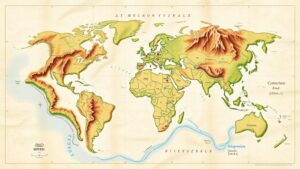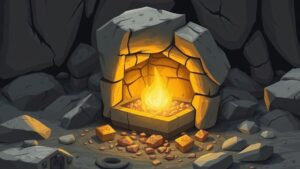Using Historical Accounts to Validate Treasure Map Features
Using Historical Accounts to Validate Treasure Map Features
Treasure maps have captivated the imagination of adventurers and historians alike for centuries. These documents often promise hidden riches and lost artifacts, but their authenticity can be contentious. Historical accounts serve as a valuable tool in validating the features depicted on treasure maps. By triangulating these accounts with archeological evidence and geographical data, treasure hunters and scholars can enhance their understanding of what lies beneath the land or sea. This article explores how historical documentation can affirm or debunk the claims made by treasure maps.
The Importance of Primary Sources
Primary sources are the bedrock of historical research, especially when it comes to treasure maps. Letters, diaries, official reports, and newspapers from the period in question often contain accounts of treasure discoveries, robberies, or notable figures who might have been involved with the treasure in question.
For example, the famous 1715 Spanish Treasure Fleet wreck off Floridas coast is supported by numerous ship logs and reports detailing its ill-fated journey. e documents allow treasure hunters to correlate the claims on maps with real historical events, providing a more comprehensive understanding of the treasures context.
Geographical Correlation
Once historical accounts are gathered, they can be used to validate the geographical features present on treasure maps. This process often requires cross-referencing old maps with current geographical data.
For example, a treasure map may indicate a hidden cache near a waterfall surrounded by large oak trees. Researchers can use old botanical surveys, topographical maps, and geological studies to determine if such a waterfall and tree formation existed in the indicated area at the time the treasure was supposedly buried. This kind of geographical correlation can either support or undermine the treasure map’s claims.
Archeological Evidence
Incorporating archeological research is critical when validating features on treasure maps. Finds from excavations, like artifacts connected to the period in which the treasure was hidden, can provide substantial supportive evidence. For example, at the site of a purported treasure, archeological digs might uncover period-specific coins or items that correspond with the accounts mentioned in historical literature.
- Cannon and Shipwrecks: The discovery of cannon parts alongside coins in an area corresponds with historical records of shipwrecks.
- Artifacts: Items such as jewelry or pottery pieces found can often be traced back to specific cultures or events described in historical accounts.
Case Study: The Lost Treasure of Captain Kidd
The tale of Captain William Kidd, an infamous pirate, is one of the most well-documented treasure stories. Reports and logs from the late 17th century mention caches of gold and silver buried in various locations. Historical documents, such as trial transcripts and private correspondence of the time, reveal conflicting accounts of Kidds treasure, pointing to different potential burial sites.
In modern treasure hunts, researchers rely on these historical accounts to pinpoint where to search. In 2007, for example, treasure hunters used these primary sources, combined with sonar technology, to locate an area off the coast of Catalina Island, California, leading to the discovery of gold coins and other valuable items believed to have been associated with Kidd.
Challenges in Validating Treasure Maps
While historical accounts enhance the validity of treasure maps, challenges abound. One major issue is the romanticization or inaccuracy of accounts over time. Legends can morph, and oral histories may include embellishments or inaccuracies that diverge from historical facts. Plus, contemporary interpretations can misalign with the historical context.
For example, treasure maps drawn during the 19th century may have included features based on myths or rumor, leading to wild goose chases for modern treasure hunters. The importance of cross-examining these historical accounts with multiple sources is thus vital to establishing an accurate narrative.
Real-World Applications
Using historical records to validate treasure maps extends beyond mere treasure hunting; it offers insight into historical geography, trade routes, and social dynamics during various periods. e intertwined narratives enrich our understanding of historical events beyond the search for riches.
- Historical Education: Schools and academic institutions can utilize case studies of treasure maps to teach historical methodology.
- Tourism: Rich historical narratives associated with treasure hunts can attract tourism to various sites, boosting local economies.
Conclusion
Validating treasure map features through historical accounts is an intricate endeavor that merges history, archaeology, and geography. Although challenges exist, the methodical approach to examining primary sources, correlating geographical data, and analyzing archeological findings has proven effective in many cases. As treasure hunters and historians work collaboratively, they illuminate not only the potential for hidden riches but also the rich tapestry of human history and adventure that accompanies such quests.
Future treasure seekers would benefit from taking a multi-faceted approach–thorough research, an understanding of historical contexts, and a careful examination of historical accounts will enhance the probability of success in uncovering history buried beneath the earth.


